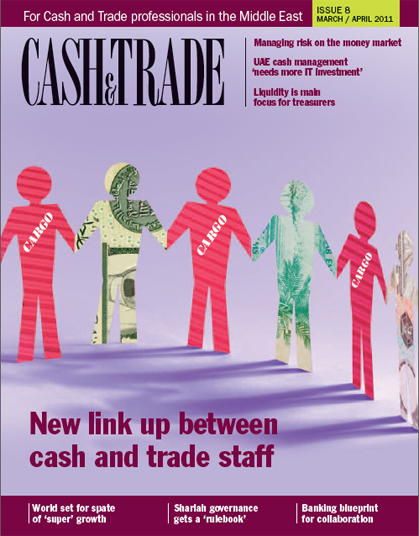Treasurers’ main focus remains liquidity, according to the 12th annual global cash management survey carried out by JP Morgan asset Management and the association of Corporate Treasurers.
It reveals that while extreme risk aversion is beginning to recede, treasurers remain cautious in the wake of the financial crisis. In particular, the survey shows a continued focus on liquidity, and an ongoing scrutiny of the financial strength of the institutions with which treasury departments invest.
The key fi ndings of the survey were: Liquidity remains uppermost: with 2009’s survey revealing liquidity as the most commonly cited concern among treasurers, a year on, as the repercussions of the crisis continue to be felt in global markets, it still remains a focus, with 68 per cent of respondents identifying it as one of their top fi ve concerns. Th ose surveyed also revealed cash management (cash concentration, liquidity management) is now the main area of importance in the treasury department, replacing cashfl ow forecasting, which moved into second place
Increasing emphasis on financial stability: the desire to reduce risk is reflected in the criteria used by treasurers to select their primary bank, with a bank’s financial strength increasing in importance for the second consecutive year, and now ranking almost equally with the quality of relationship management and customer service
Banking relationships are increasing: for a third successive year, treasury departments have increased their banking relationships, with 29 per cent saying they’ve increased the number of banking relationships, compared with 21 per cent that have seen a reduction
Treasurers’ increasing exposure limits: almost a third of treasurers have increased their exposure limits to their relationship banks, a refl ection of the fact that companies continue to hold high levels of cash, with more than half stating that surplus cash on their organisation’s balance sheet is higher this year
Money market funds still favoured by US treasurers: north american treasurers continue to allocate far more of their surplus cash to money market funds, with 41 per cent ranking them as their most used by size of asset allocation. american treasury departments also allocate less to bank deposits than their asian and european counterparts, although bank deposits continue to receive the largest allocation overall, despite the impact of the fi nancial crisis on confi dence in the banking system
Beginnings of a return of risk appetite: although the survey showed that treasurers, overall, remain cautious in the wake of the fi nancial crisis, it also pointed to the beginnings of a recovery of risk appetite. While the majority of treasurers last year were content to receive returns in line with Libor from their surplus cash, the most commonly selected return preference this year was Libor+
Changing credit rating requirements: a triple a rating remains the minimum requirement for the largest number of treasurers, across all three investment types – direct securities, pooled investments and bank deposits – but the survey also reveals there has been a small decrease in the proportion of investment policies requiring a triple a rating, reversing the increase seen last year.
Jim Fuell, head of global liquidity for europe, Middle east and africa (eMea) at JP Morgan asset Management, said, “Treasurers are emerging from the fi nancial crisis with new priorities. Th e appetite for yield is returning, but the lessons of the crisis will not be easily forgotten, and it is reassuring to see that treasurers are still largely unwilling to take on credit or liquidity risk in the quest for yield. Instead, those who are willing to add risk would prefer to take on duration risk.
“However, the majority of treasurers seeking higher yields remain unwilling to take on additional risk, suggesting that the priority is still security rather than yield. additionally, the fact that surplus cash on balance sheet is higher this year than in previous years, refl ects a general trend for the stockpiling of cash since the height of the crisis. next year, we may see cash levels fall again as companies put cash back to work through M&a and capital investment.”
 Cash And Trade Magazine For Cash and Trade professionals in the Middle East
Cash And Trade Magazine For Cash and Trade professionals in the Middle East




